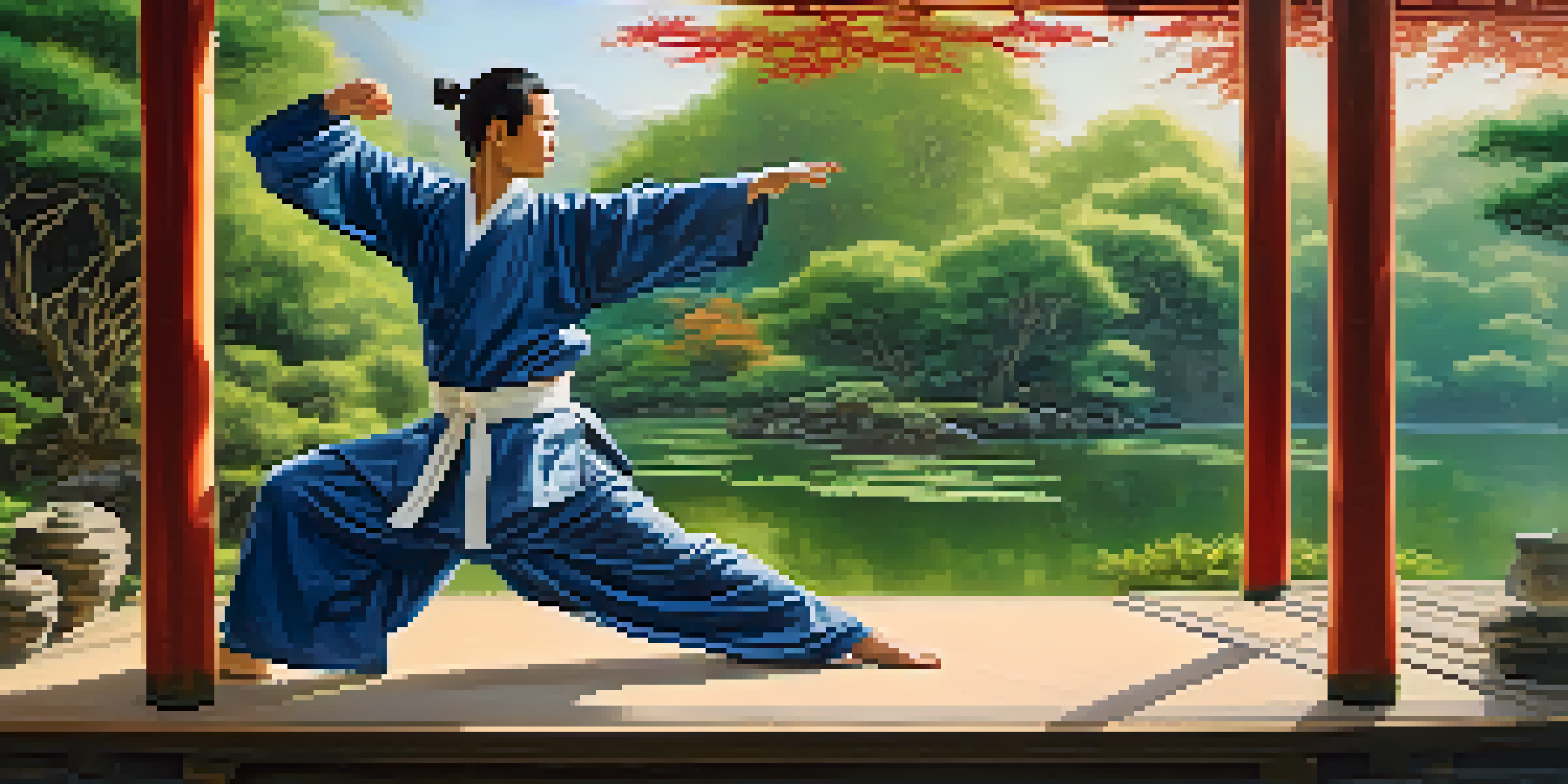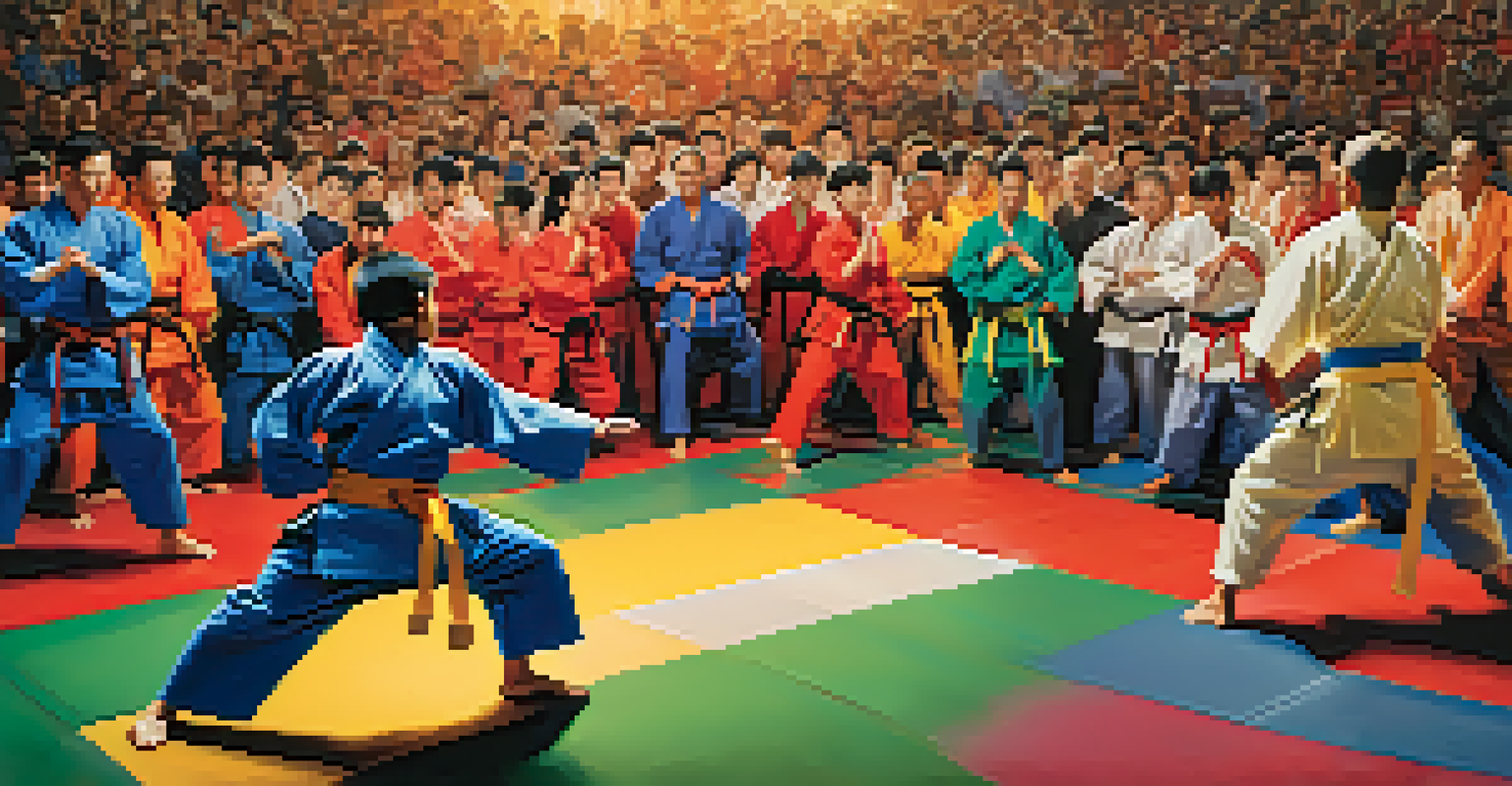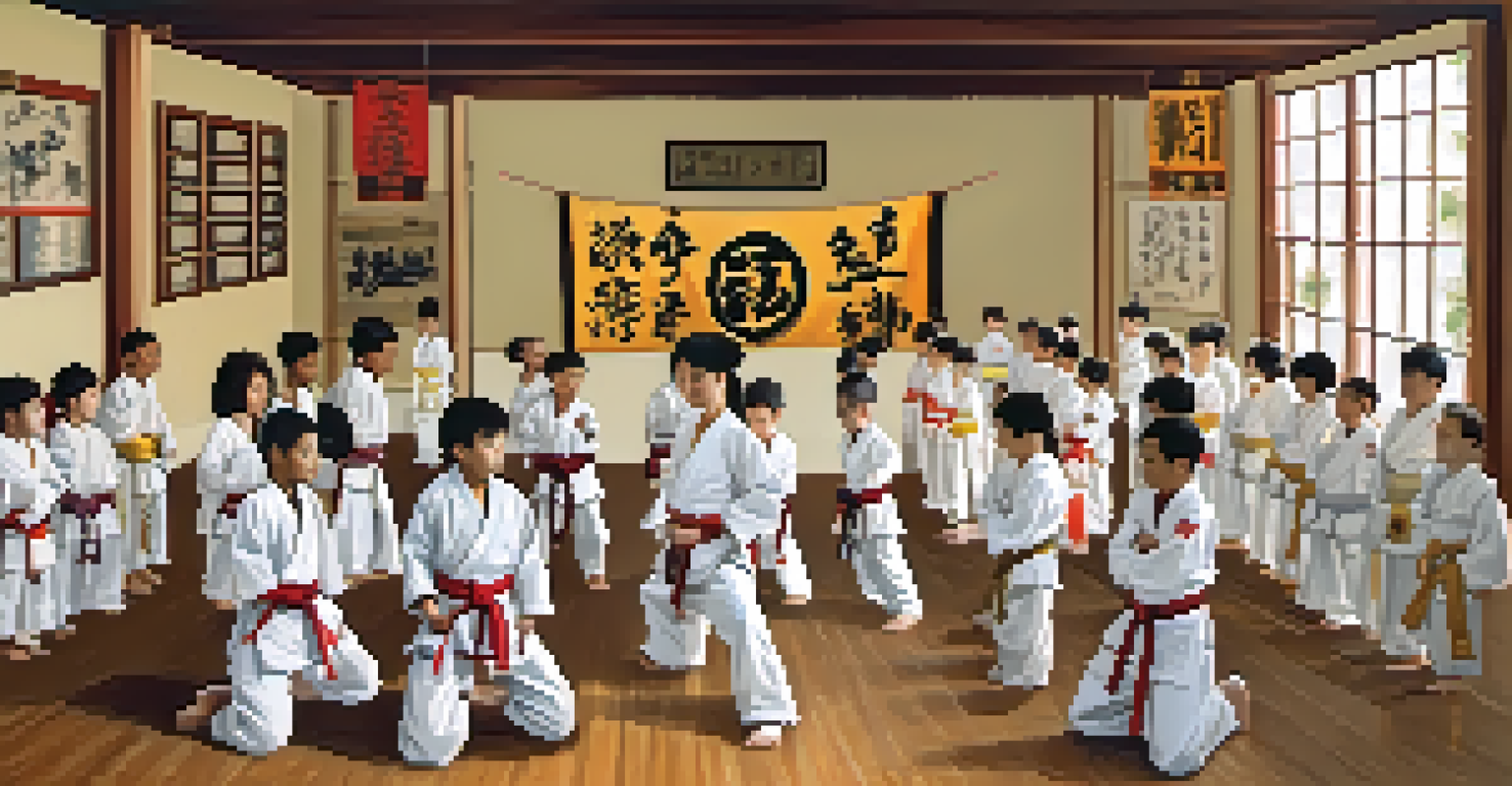Martial Arts and Their Impact on Cultural Heritage Awareness

Martial Arts as a Cultural Expression
Martial arts are more than just physical disciplines; they are rich cultural expressions that reflect the history and values of their origins. Each style, from karate to Brazilian jiu-jitsu, carries with it stories, philosophies, and traditions that have been passed down through generations. This cultural significance helps practitioners connect with their heritage, fostering a sense of identity and belonging.
Martial arts are a way of life, a way of living in harmony with one's self and the world.
For instance, traditional Chinese martial arts, known as Wushu, not only emphasize physical prowess but also incorporate elements of Chinese philosophy and medicine. Practitioners often learn about the historical contexts of the techniques they practice, deepening their appreciation for the culture. Through this lens, martial arts serve as a gateway to understanding and valuing diverse cultures.
In essence, engaging in martial arts allows individuals to celebrate and preserve their cultural heritage, while also promoting respect for other traditions. This cultural exchange enriches the global community, making martial arts a vital tool for cultural awareness.
The Role of Martial Arts in Community Building
Martial arts schools and dojos often act as community hubs, bringing people together and fostering relationships across different backgrounds. These spaces allow practitioners to share their cultural narratives while learning from one another. This cross-cultural interaction promotes empathy, understanding, and appreciation of diverse heritages.

For example, many martial arts competitions feature participants from varied cultural backgrounds, showcasing the beauty of diversity in unity. These events not only highlight individual skills but also celebrate the unique traditions each participant represents. The camaraderie built during training sessions and competitions can lead to lasting friendships that transcend cultural barriers.
Martial Arts as Cultural Identity
Martial arts serve as a bridge to cultural heritage, allowing practitioners to connect with their history and foster a sense of belonging.
As a result, martial arts contribute to stronger, more cohesive communities, where individuals feel supported in their cultural identities. This sense of belonging is crucial for cultural heritage awareness, as it encourages individuals to take pride in their backgrounds while respecting others.
Martial Arts and Historical Preservation
Many martial arts styles are rooted in historical contexts, preserving the philosophies and techniques of their ancestors. This connection to history not only enhances the practice but also creates opportunities for cultural education. Practitioners learn about the origins of their martial arts, which often ties back to significant historical events or cultural shifts.
The ultimate aim of martial arts is not having to use them.
For instance, Aikido, developed in Japan, incorporates principles of harmony and peace, reflecting the philosophical beliefs of its founder, Morihei Ueshiba. As students study these principles, they gain insight into Japanese culture and history, fostering greater appreciation for its nuances. This historical awareness enriches the experience of martial arts beyond mere physical training.
Ultimately, the preservation of these historical narratives through martial arts serves to educate new generations about their cultural heritage. By honoring the past, practitioners ensure that these cultural treasures continue to thrive.
Martial Arts as a Form of Cultural Diplomacy
Martial arts can serve as a powerful tool for cultural diplomacy, bridging gaps between nations and fostering international understanding. When people practice martial arts from different cultures, they engage in a dialogue that transcends language and political barriers. This shared experience helps to cultivate mutual respect and appreciation.
For example, international martial arts tournaments bring together athletes from diverse backgrounds, creating opportunities for cultural exchange. Participants not only compete but also share their traditions, customs, and values, leading to a richer understanding of one another. These interactions often spark friendships and collaborations that extend beyond the mat.
Building Community Through Martial Arts
Martial arts schools create inclusive environments that promote empathy and understanding across diverse backgrounds, strengthening community ties.
In this way, martial arts promote peace and unity, reinforcing the idea that despite our differences, we can come together through shared passions. The impact of this cultural diplomacy is profound, as it builds bridges that contribute to global harmony.
Educational Initiatives in Martial Arts Training
Many martial arts schools are now integrating educational initiatives aimed at promoting cultural heritage awareness among their students. These programs often include workshops and seminars that explore the history, philosophy, and cultural significance of various martial arts. By educating students about these aspects, schools create a deeper connection to their practice.
For instance, some schools might host guest speakers proficient in the history of their martial arts, or organize cultural events that celebrate traditional practices. This approach not only enhances the learning experience but also emphasizes the importance of preserving cultural heritage in a modern context. Students begin to see martial arts as more than just physical training; it becomes a holistic journey.
Through these educational initiatives, martial arts practitioners are empowered to share their knowledge, further spreading cultural heritage awareness within their communities. This ripple effect fosters a greater appreciation for diversity and encourages a sense of responsibility to uphold these traditions.
The Global Influence of Martial Arts
The global spread of martial arts has significantly impacted cultural heritage awareness on an international scale. As martial arts styles travel beyond their countries of origin, they introduce unique cultural elements to new audiences. This exchange not only enriches the practice but also cultivates a broader understanding of diverse cultures.
For example, the popularity of Brazilian jiu-jitsu has led to a greater appreciation for Brazilian culture and its historical influences. As practitioners engage with this martial art, they also learn about its roots, including the influences of indigenous and African cultures. This understanding encourages respect and curiosity about the vast tapestry of global cultural heritage.
Preserving Heritage Amid Challenges
While martial arts promote cultural exchange, commercialization and the rise of mixed martial arts pose risks to the preservation of traditional practices.
In this way, martial arts act as ambassadors of culture, fostering global connections and awareness. As more people engage with various martial arts, they contribute to a richer, more inclusive understanding of our world's diverse traditions.
Challenges in Preserving Cultural Heritage in Martial Arts
Despite the positive impact of martial arts on cultural heritage awareness, there are challenges in preserving these traditions. As martial arts become more commercialized, there is a risk of diluting their cultural significance. Practices may shift from deep-rooted traditions to competitive sports, potentially overshadowing the philosophies and histories that underpin them.
Furthermore, the proliferation of mixed martial arts (MMA) has led to the blending of styles, which can sometimes obscure the distinct cultural identities of individual martial arts. While this promotes diversity in techniques, it may also lead to a loss of the unique narratives that each style embodies. It’s essential to strike a balance between innovation and preservation.

Navigating these challenges requires a collective effort from practitioners, instructors, and cultural advocates to prioritize the education and preservation of martial arts heritage. By doing so, we can ensure that future generations appreciate and honor the rich cultural narratives embedded within these disciplines.